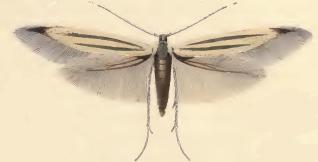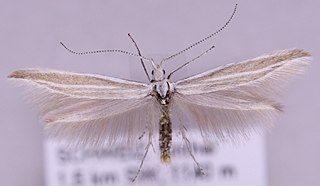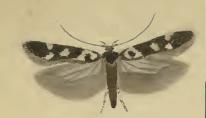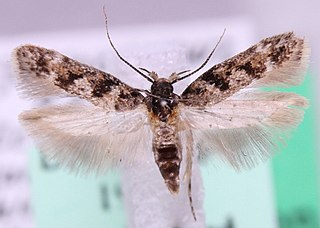
Anthyllis is a genus of flowering plants in the family Fabaceae. This genus contains both herbaceous and shrubby species and is distributed in Europe, the Middle East and North Africa. The most widespread and familiar species is A. vulneraria, a familiar grassland flower which has also been introduced to New Zealand.
British NVC community MC5 is one of the maritime cliff communities in the British National Vegetation Classification system. It is one of five communities categorised as maritime cliff crevice and ledge communities.

Anthyllis vulneraria, the common kidneyvetch, kidney vetch or woundwort is a medicinal plant native to Europe. The name vulneraria means "wound healer".

The Circumboreal Region in phytogeography is a floristic region within the Holarctic Kingdom in Eurasia and North America, as delineated by such geobotanists as Josias Braun-Blanquet and Armen Takhtajan.

Coleophora galbulipennella is a moth of the family Coleophoridae or leaf miners. It is known from Europe, where it is found from Sweden to Spain, Italy and Greece and from Great Britain to southern Russia.

Coleophora solitariella is a moth of the family Coleophoridae. It is found from Fennoscandia to the Pyrenees, Italy and Romania and from Great Britain to southern Russia.

Coleophora chalcogrammella is a moth of the family Coleophoridae. It was first described by Philipp Christoph Zeller in 1839 and is found in Europe.
Coleophora lithargyrinella is a moth of the family Coleophoridae found in Europe.

Coleophora rectilineella is a moth of the family Coleophoridae. It is found from France and Italy to Romania.
Coleophora vulnerariae is a moth of the family Coleophoridae. It is found from Norway and Sweden to the Iberian Peninsula, Italy and Greece and from Great Britain to the Baltic states, Romania and Bulgaria. It is also found in southern Russia.

Caryocolum vicinella is a moth of the family Gelechiidae. It is found in most of Europe, eastwards to the southern Ural.
Calaminarian grassland is grassland where the process of seral succession has been halted due to the toxicity of soils containing high levels of toxic metal ions. These habitats may be semi-natural on naturally exposed deposits, or the result of mining, or from erosion by rivers, sometimes including washed-out mine workings.

The flora of Lebanon includes approximately 2,600 plant species. Situated on the eastern coast of the Mediterranean Basin, Lebanon is a reservoir of plant diversity and one of the world's biodiversity hotspots for conservation priorities. Endemic species constitute 12% of the Lebanese flora; 221 plant species are broad endemics and 90 are narrow endemics. Important Plant Areas (IPAs) featuring the country exceptional botanical richness were defined in 2018.

Caryocolum alsinella is a moth of the family Gelechiidae. It is found throughout Europe It is also present in North Africa.
Scythris siccella is a moth of the family Scythrididae first described by the German entomologist Philipp Christoph Zeller in 1839, found in Europe.





